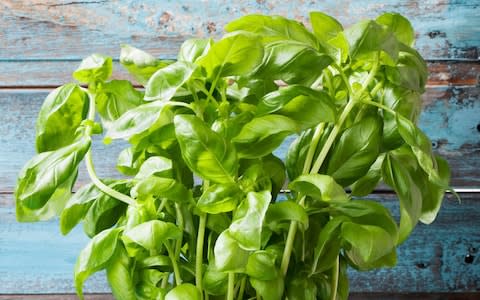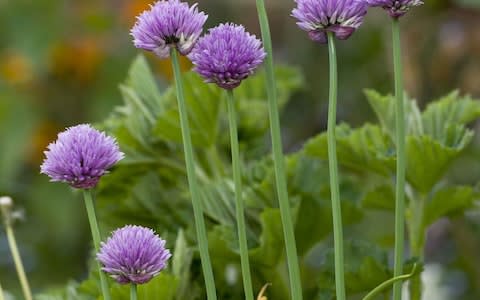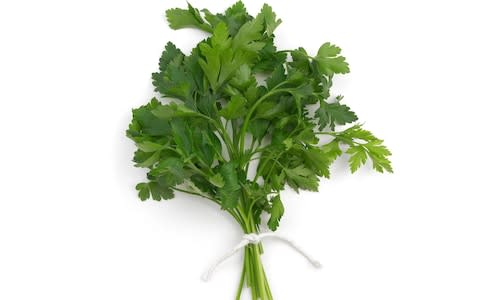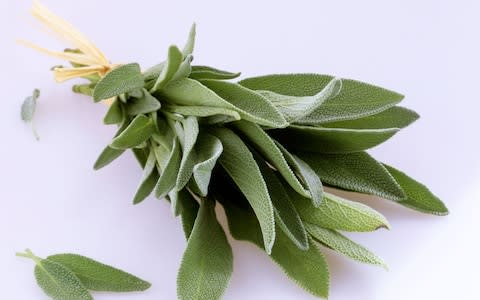The ultimate guide to growing herbs

In Britain we can grow hundreds of different herbs from all over the world for many different uses, medicinal and edible. Many of the most popular herbs are those used in cooking and these typically originate from the Mediterranean, where fierce sun and poor soils create the best conditions for producing the essential oils for both scent and flavour.
Herbs have been cultivated for thousands of years for their useful properties and myths and folklore have grown up around them. Early books on gardening, known as 'Herballs', often focused on this large group of plants and spread both superstitions and knowledge about them.
For more on the history and cultivation of herbs there are many modern expert sources to refer to, such as Jekka's Complete Herb Book, by Jekka McVicar, who also runs a herb nursery. But here's our complete guide on how to grow the most popular ones for your kitchen.
Basil
Basil, the staple of much Italian cooking, is a very useful herb to have handy, although you'll need a sunny spot to grow it successfully.

Container/Garden?
Basillikes well-drained, rich soil. So growing it in a pot may be the best option in terms of soil and nutrient management.
They do however love full sun - so make sure the pot is perched on a sunny windowsill or patio in summer. It will need to protection from frost, eg a polytunnel, in winter.
If you are growing basil in the garden, sow in May and June into seed trays. The young seedlings should be teased out once they are about 3in tall and repotted carefully into individual pots. Harden off the plants for a week by leaving them outside during the day and bringing them inside at night. They will also need lots of liquid feed. Nip out the tips to encourage bushy plants. By July you should be able to harvest leaves for cooking.
Uses
Chopped fine/blended and combined with pine nuts and olive oil is the basis of a delicious pesto to add to pasta/pizzas.
Basil can also be a delicious garnish to any salad, or if you're feeling daring, can add a whole new dimension to chocolate cake.
Mint
Mint is one of the more versatile herbs, as it can be used for both sweet and savoury dishes - it is certainly worth your while to grow it.

Container/Garden?
Mintcan run rampant in many gardens, so growing it in a pot is often the safer option.
Mint enjoys rich, moist soils, so managing water content is easier in pots, too. Make sure they're in a sunny spot for at least half the day.
Uses
Mint can be used in teas, with roast lamb, combined with chocolate in ice cream or even added to couscous or salads.
Coriander
Coriander is often used in Indian cuisine and can add a beautifully fragrant element to many spicy dishes.

Container/Garden?
Coriandercan struggle if kept in full sun all day, so give it a spot that is shaded at midday. It can be easier to grow in pots, so that the plant can be moved if necessary. If growing in pots, make sure they're fairly deep as the tap root can grow long.
If you are going to grow coriander in beds outside, this is best done from seed, as transplanting coriander can cause plants to bolt - not ideal as it's the foliage that the plant is grown for, rather than the seeds (although these do have their uses). Make sure, too, that the soil never dries out as coriander does not like dry conditions.
Uses
Coriander, partnered with carrot, can make the most delicious soup. Add it to curries such as Jalfrezi or Tikka Masala, as well as Thai salads, to improve the flavour of any dish.
Chives
Part of the allium family, chives, similarly to mint, are an extremely diverse herb in that they can be used in all types of cuisine.

Container/Garden?
Chiveslike full sun and well-drained soil, however they can also grow in heavier soils in partial shade. They should be well fertilised too, if used often, with a fish and bone mixture or a vegetable plant food.
Despite the flowers being rather pretty, growth will be encouraged if the buds are snipped off.
Uses
With a flavour similar to garlic and onions, chives work well with risotto or snipped over egg or cheese-based dishes.
Parsley
Typically partnered with fish, parsley is also perfect for adding a savoury tang to soups, stews and vegetable side dishes.

Container/Garden?
If you live near to chalk downlands, then parsley will be that bit easier to grow in your garden, as they love neutral-alkaline soils.
If not, it may be easier to grow in pots where the soil can be managed much more simply. Parsley thrives in sun or partial shade.
Uses
Often used in many a fish dish, parsley is a staple of French cooking, too. Or use it as a garnish with potatoes, or perhaps finely chopped in a tabbouleh.
Sage
With a rather medicinal taste, sage can be used sparingly in many delicious dishes.

Container/Garden?
Sageis rather fussy when it comes to its soil type and location but grows well in the right location - or in a pot.
Sage typically likes to be kept in well-drained to dry, neutral to alkaline soils, in full sunlight - it doesn't like low light in winter.
In early spring, give it a severe prune to encourage a fresh flush of foliage - rather than allow the plant to become leggy.
Uses
Of course sage can be partnered with onion in a tasty stuffing, or used with pork, or even added to butter for a pasta sauce.


